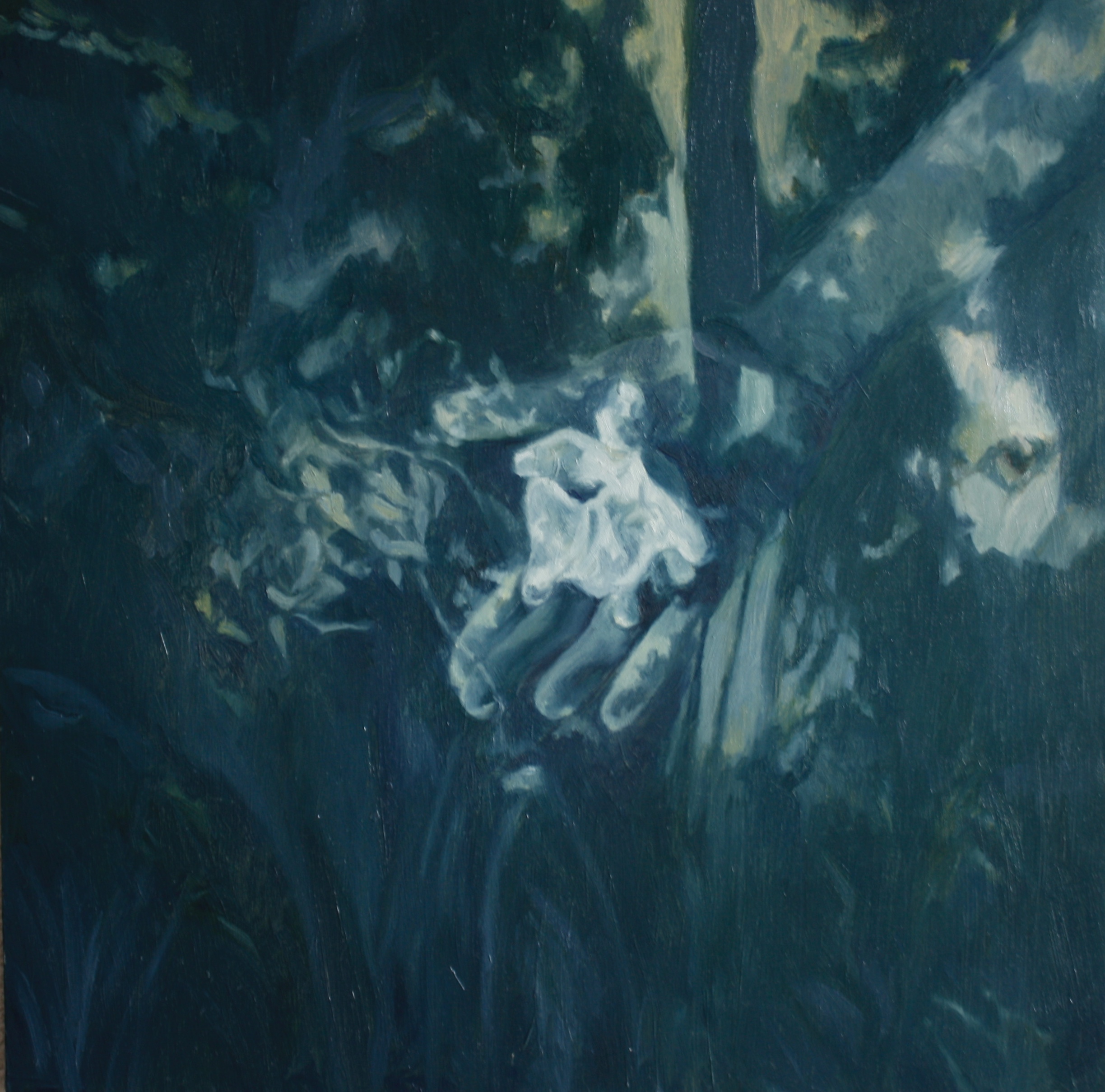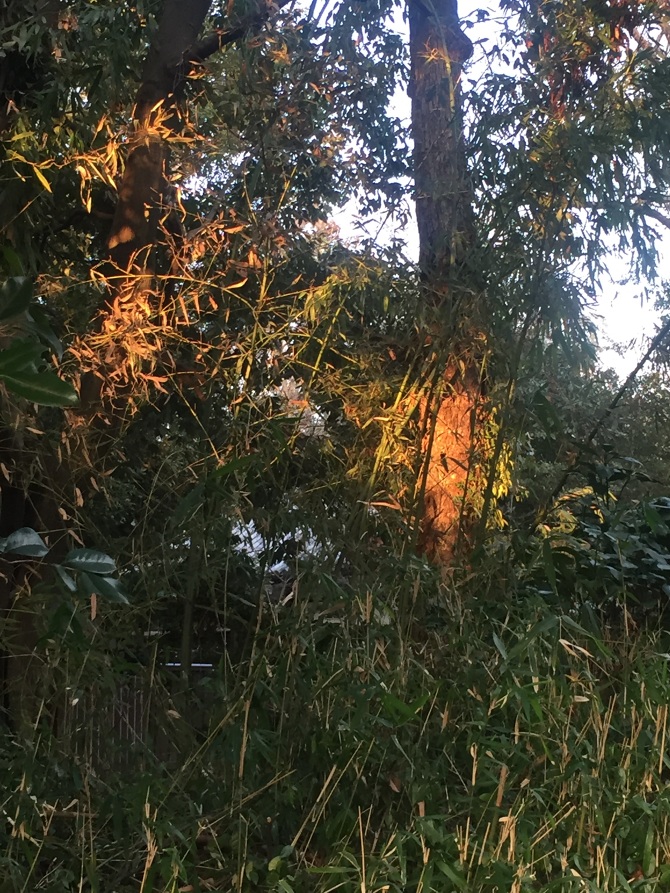Through EOS’s various lectures and studio visits I sought wisdom through past female artists of the asian diaspora, namely Kazuko Tsujimura and Theresa Hak Kyung Cha. Both artists were under recognized during their time, fallen through the cracks because they did not fit into the overarching western lens of art history. I found myself completely inspired by the ways in which they had both investigated tensions between their bodies and the nature of identity. They were my predecessors, my lineage.
As a visibly Japanese artist with an American identity, working amidst a group of other Japanese artists also interested me; how does their cultural identity inform their adaptation to a foreign country? How do these multiple layers internally and externally of “othering” manifest? During the month of August I reflected in the juxtaposition between two countries and two cultures: the cultural identities that we define ourselves and that in which the culture around us define.
Additionally I went deeper into my investigation of the gallery as a theatrical space. How can I activate both the site-specificity of the space and the viewer’s active participation through the objects that I create or curate?

Mother Tongue
Graphite on polyester, wire, sewing thread
Mother Tongue visualizes the complicated state of being our first languages hold within immigrant identities.
During the day the fabric appears light, airy, almost invisible. As night falls, the lines of the chain-link fence starkly appear against its now visible white fabric borders. This piece physicalizes the optics of our mother tongue, the ways in which it can be a gentle passageway and yet at other times a wall or barrier.


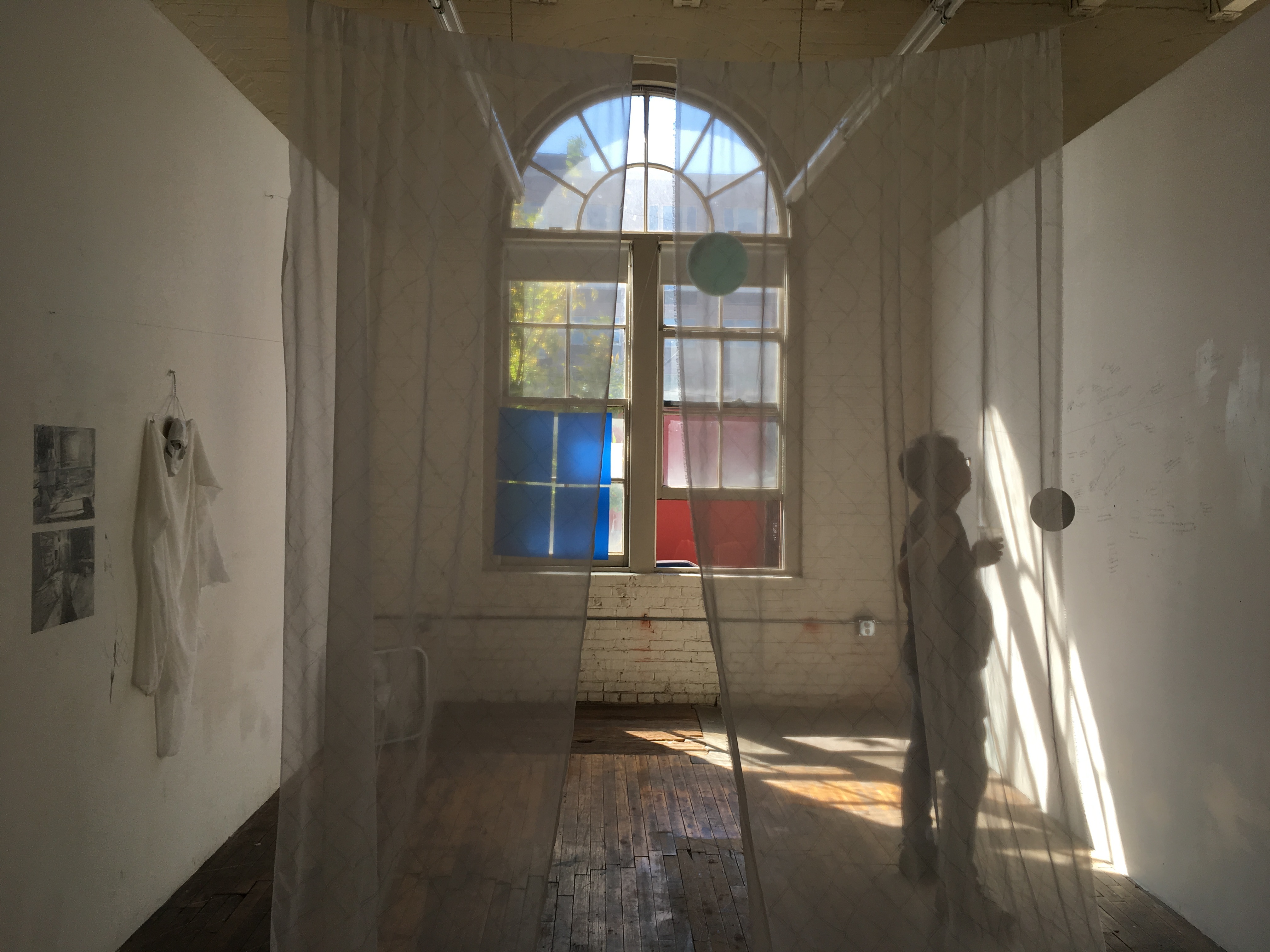

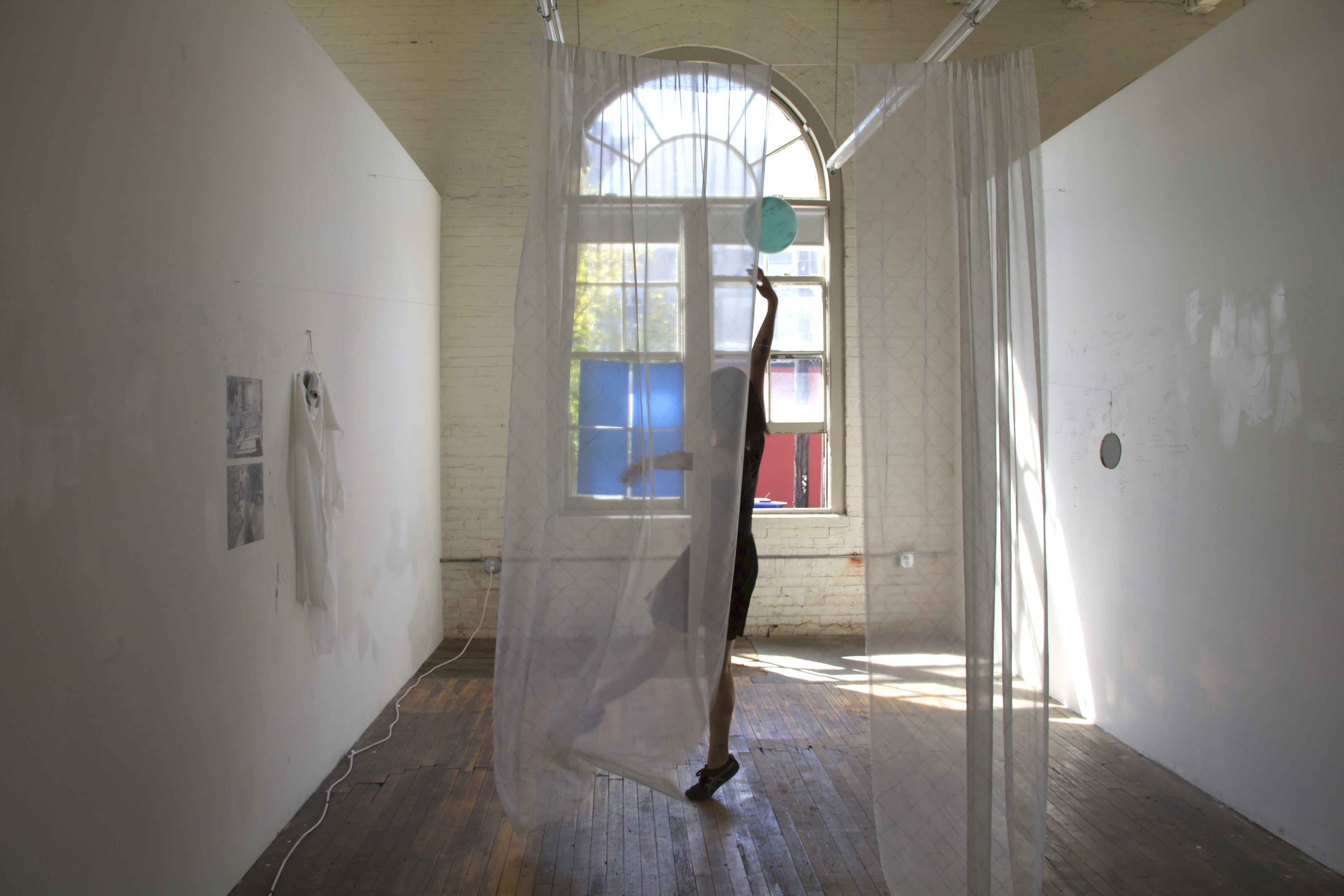

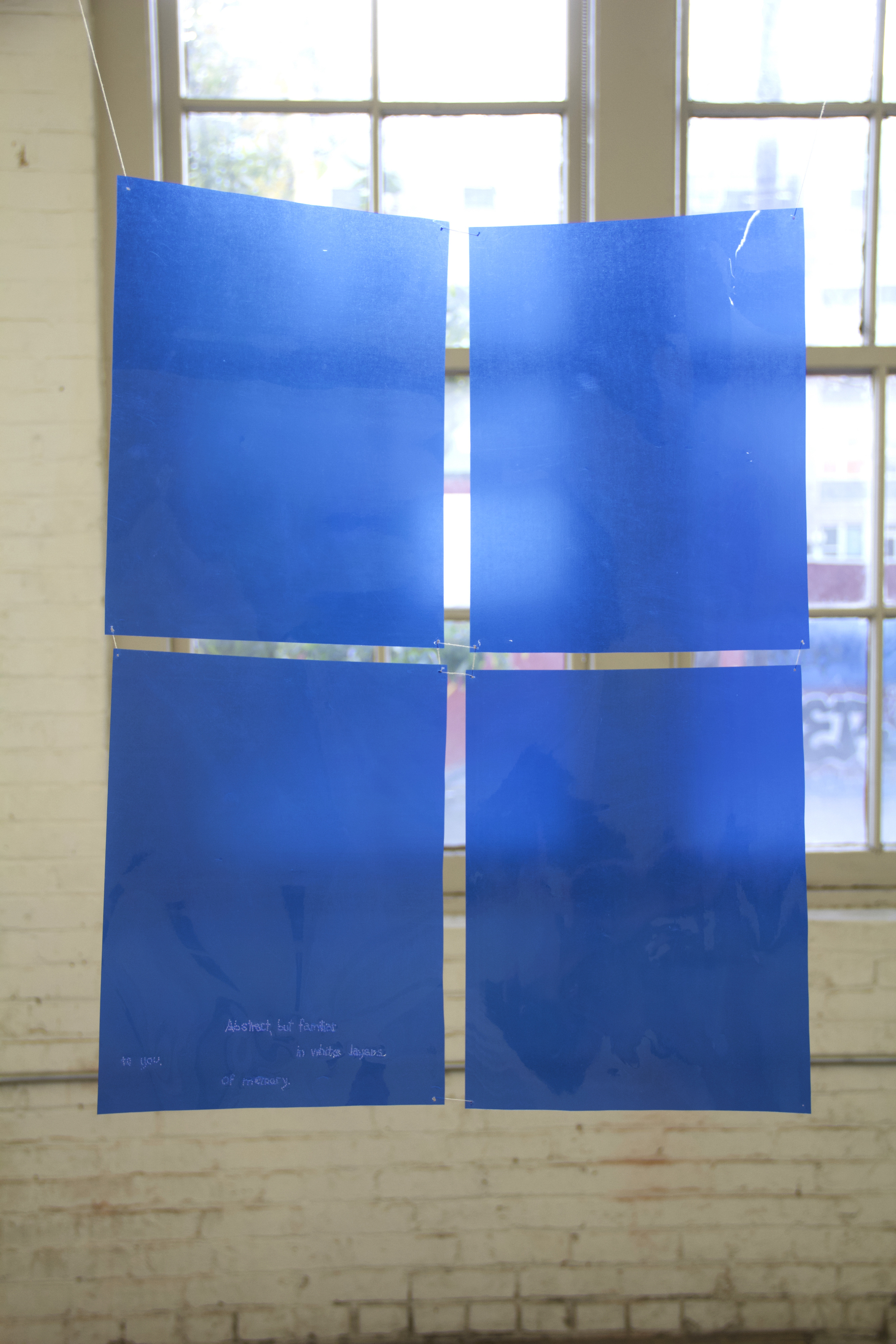
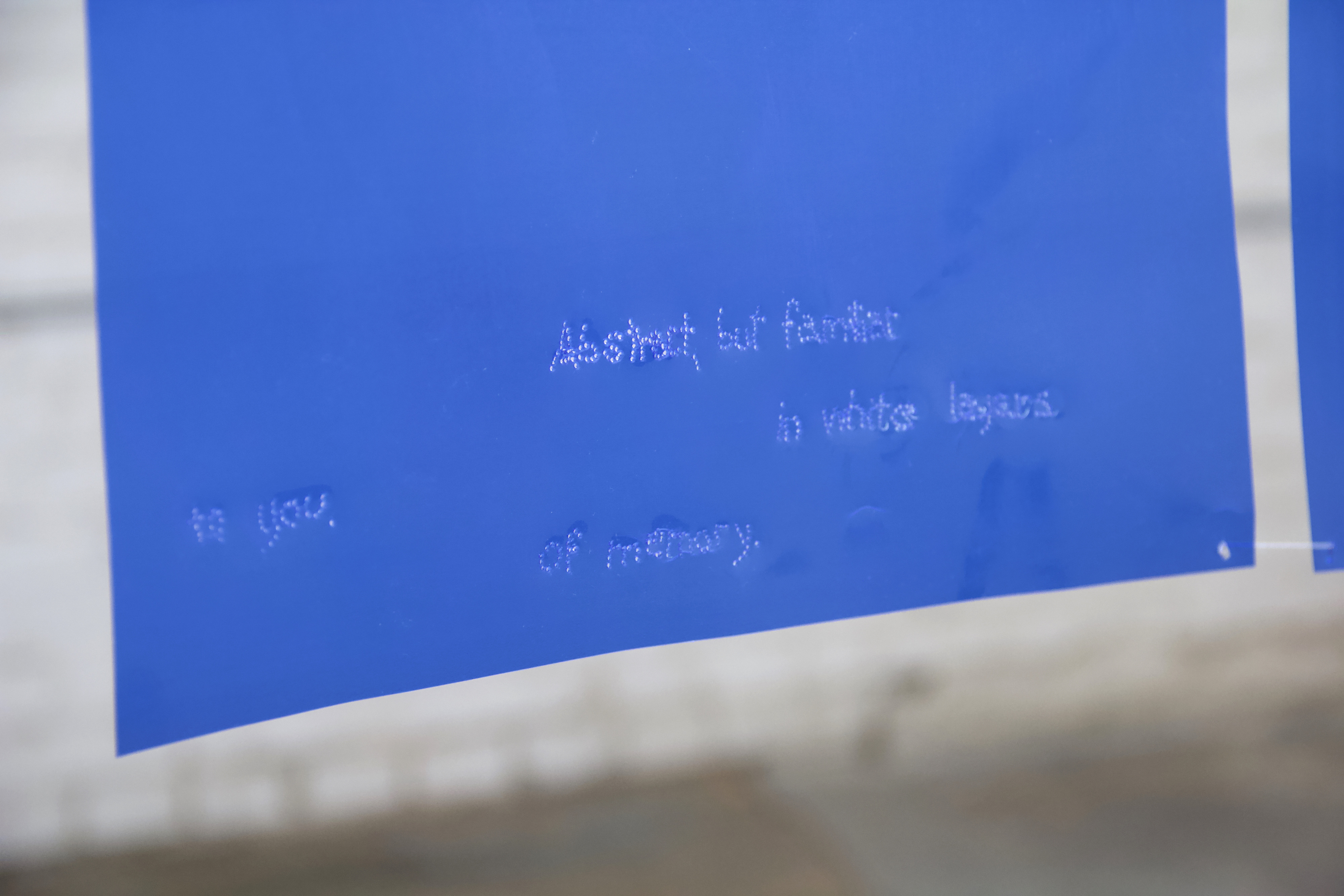
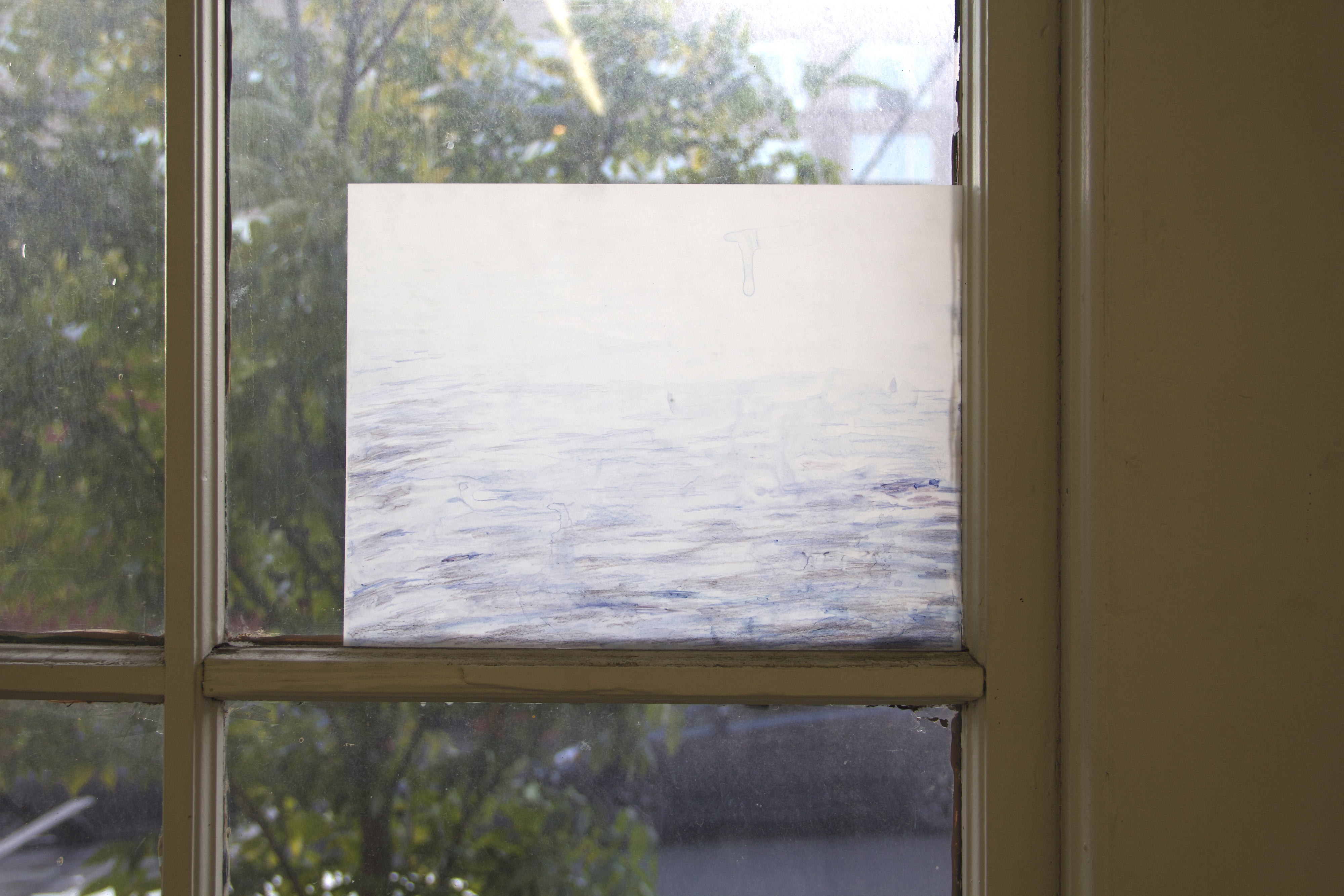
Homage to Kazuko Tsujimura
Graphite on wall
Handsewn fabric dress, mask


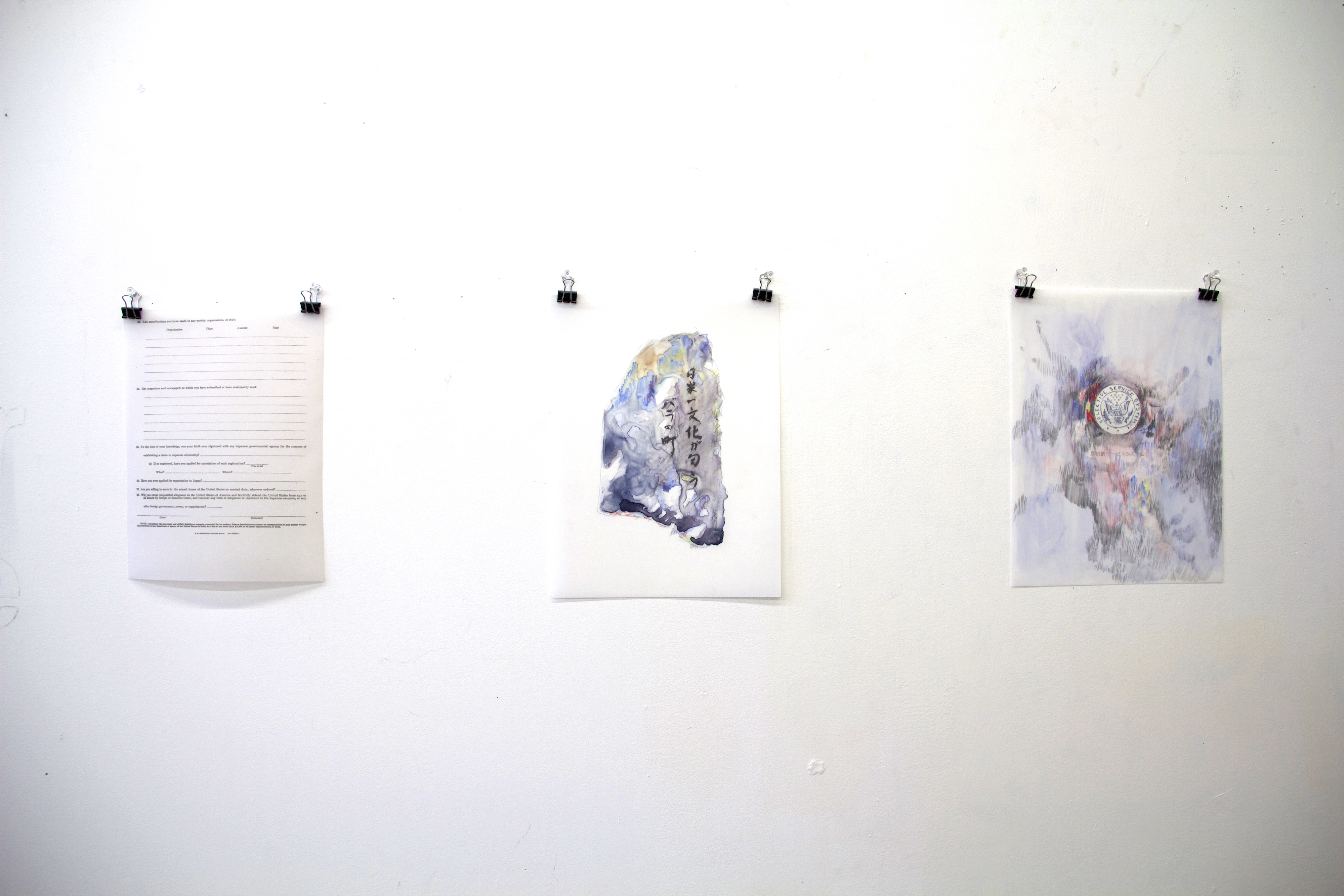
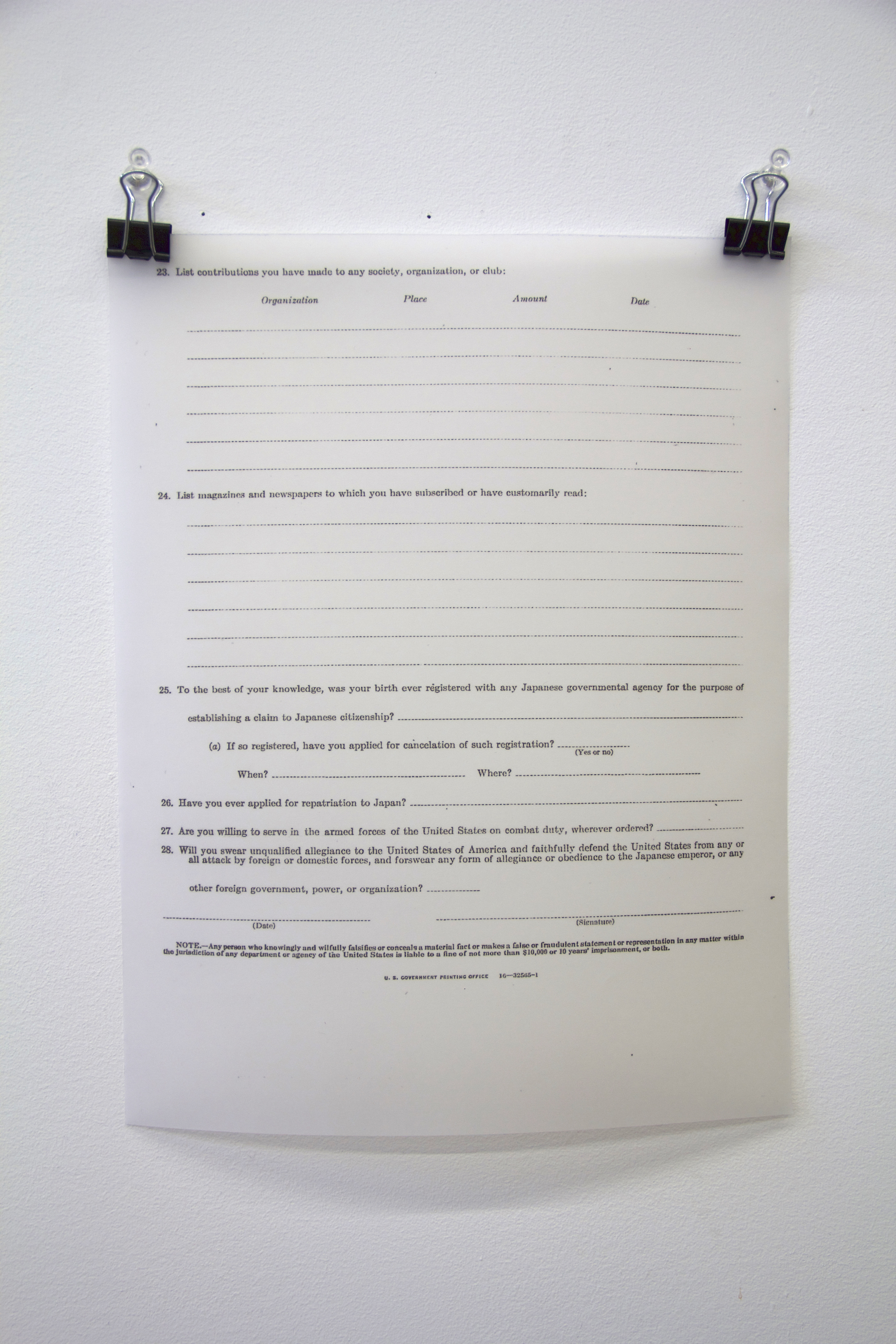



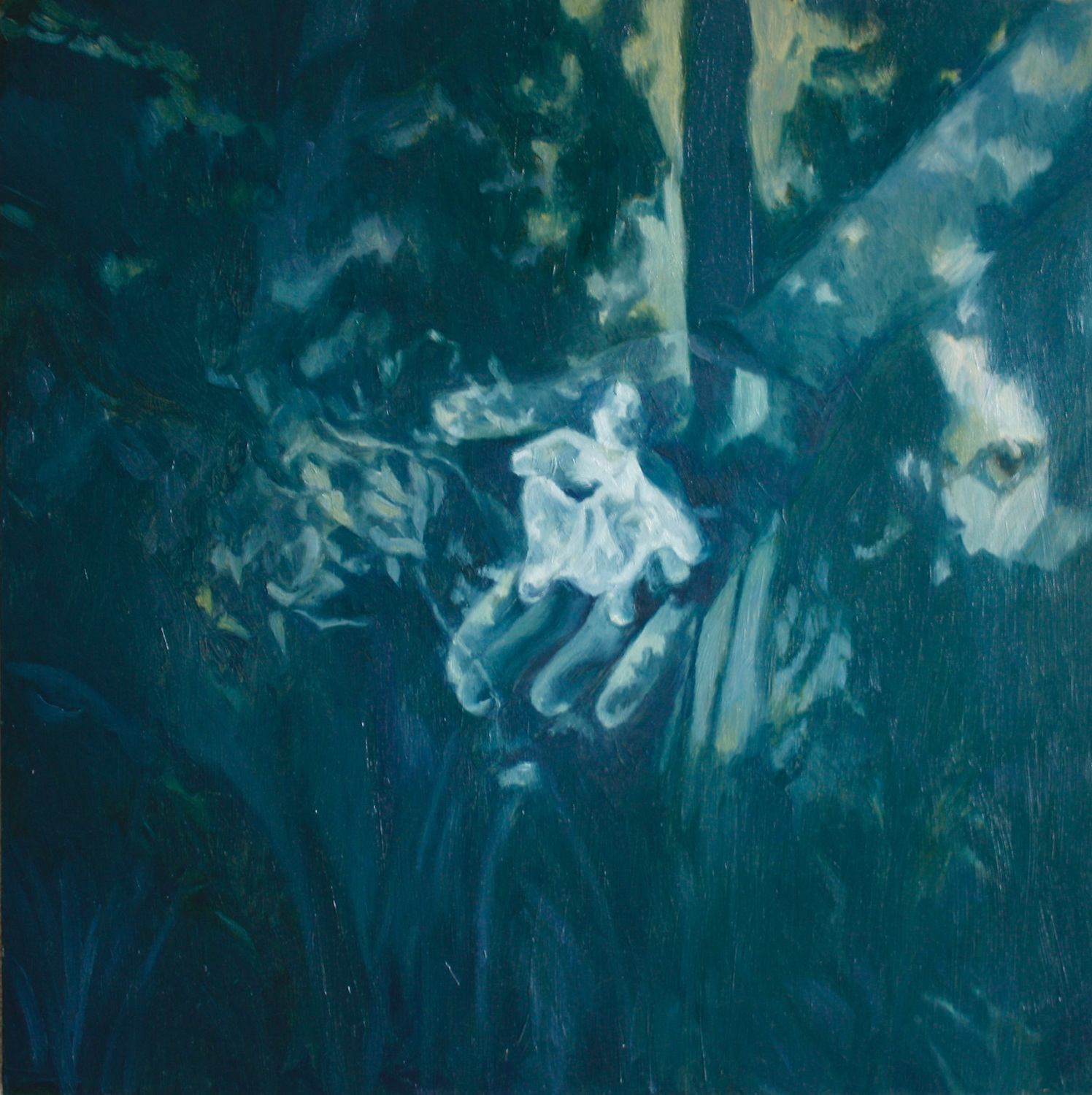
Buddha bone
12"x12"
Oil on gessobord
304 mm x 304 mm
油絵、木材パネル(ジェッソボード)
Sunset at Shimogamo
H35.4” × W25.2”
Fabric paint on silk
H900 x W640 mm
シルク、布インク
This land in Kyoto is ancestral. Shimogamo has a history extending back at least 2000 years, next to Tadasu-no-Mori (糺の森) a primeval forest mostly untouched from back then. I thought maybe something would speak to me, a semi-foreigner revisiting her roots, if I visited one of the oldest sites in this city. There was nothing unusual, just that on my way out, a patch of sunlight hit a grove of bamboo stalks and trees in front of me. Looking back on that moment—if it was even anything at all—is like trying to wrap my head around the abstract idea of a holy site standing for 2000 years. Every time we try to remember, we recreate a new memory, a re-interpretation, similar to the process of recreating an image through different media. A new memory breathing in different forms.
As part of Jiffy Moment at Konsthall, Årstaberg, Sweden curated by Sandra Leandersson.




